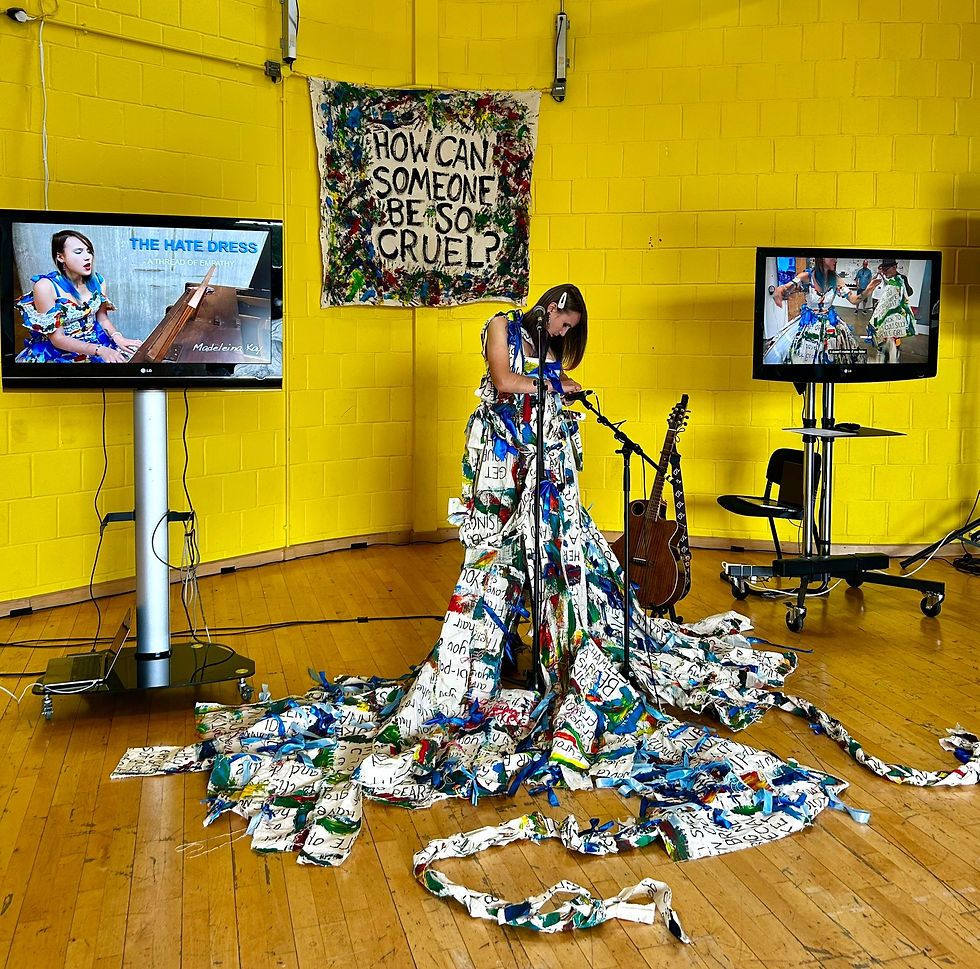Reading DADAISM
- Madeleina Kay

- Oct 27, 2023
- 4 min read
In an attempt to broaden my knowledge of art history I have been reading books on artists and art movements, the most recent was 'DADAISM' (all quotes included in this blog are credited to: Dadism, Dietmar Elger, Taschen, 2022).

I picked up this book (the English Version) at the Berlinsche modern art gallery in Berlin, after seeing first-hand some of the Dada masterpieces - I was especially taken with Hannah Hoch's collages which I have always admired, but never seen in person. Without wanting to sound like a rage-blinded feminist, I do think Hannah Hoch was the most influential Dadaist despite being the only woman within the movement. She is certainly the artist who I first heard about and having compared her collages to the works of others, I do believe her's are vastly superior in their complexity. 'Incision with the Dada Kitchen Knife through Germany's Last Weimar Beer-Belly Cultural Epoch, 1920' is unquestionably my favourite piece of Dada art. The detail and humour in the work, perfectly represents the 'upheaval, chaos and contadiction' of post-WWI Germany, serving as a 'panopticon' of the politics of the time. The title of the artwork has a satirical double-meaning, the word 'incision' ('schnitt') implying both the cutting process
inherent in collage as well as the artist's incisive perspectives on 1920s politics.

What I found particularly interesting, however, was how she acted as a unifying influence (perhaps a Matriarchal figure) on the other artists, 'she assembled numerous documents, materials and records of Dadaism, arranged them according to a system comprehensible only to her, and thus preserved many ephemeral witnesses to the movement over the decades'. Notably she brought the Dadists together in this collage 'My Domestic Mottoes, 1992' which consisted of 'various papers with decorative patterns, photographic depictions, scientific illustrations and a detail map' with 'pithy Dadaist slogans signed with the names of their authors'.

The collage technique was described by Max Ernst as 'the systematic exploitatio of the chance or artificially provoked confrontation of two more mutually alien realities on an obviously inappropriate level'. I found this description particularly insightful, highlighting the power of the technique drawing parallels with the work of surrealist artists. Collage is not something I have personally worked with, but I hope this insight will inform my work going forwards, especially the prinicple of juxtaposing realities for the purpose of satire. I especially loved Raoul Hausmann's take on 'The Art Critic', ridiculing the arbitrators of what was considered 'Fine Art' worthy of inclusion in the canon of art history.

Marcel Duchamp also made his own pass at the "art establishment" with arguably, one of the most important works in the history of modern art. 'Fountain, 1917/1963', which consisted of a porcelain urinal exhibited on a plinth. The audacity of this act of elevating a ready-made, utilitarian object into an object of artistic value, simply by changing the context in which it was displayed and used, questioned the fundamental principles of contmeporary art, was both profound and scandalous. 'In so doing, he poured a bucket of cold water on the traditional myth of the artist as a creator of genius' (Dadaism

What I love most about the Dadaists was their questioning of authority through ridicule and satire. The most politically contentious example of this is shown in this photograph from the 'First International Dada Fair' exhibition in Berlin, held in the rooms of art daler, Otto Burchard. On the ceiling is hung a tailor's dummy in a German army officer's uniform with a pig mask, by John Heartfield and Rudolf Schlichter - 'this exhibition later resutled i prosecution on a charge of "insulting the German army.' As an artist-activist who has spent a lot of time drawing caricatures of politicians and co-ordinating stunts where we dressed up with face masks to parody political leadership, I find these rebellious acts of satire particularly inspiring, all the more so, given the potential consequences these artists faced.

One thing which I learned about the Dadaists which spoke to me on a deeply personal level was how John Heartfield (né Helmut Herzfelde) and George Grosz (né Georg Groß) had both changed their names to anglicized versions as a 'gesture against what they regarded as intolerable German jingoism'. In 2014, I myself legally changed my name from Madeleine to Madeleina, in order to make it sound more "European" and unique - in a way, it was my own rebellion against British jingoism during the Tory government era, in the run up to the Brexit referendum. This emphasised to me how art is so much more than just visual communication or aesthetics, but about identity and embodying your values as an artist.

I particuarly liked George Grosz' drawing, 'The Guilty One Remains Unknown, 1919' which depicted 'both the victims of war and those who gained from it'. This artwork adeptly portrays the galling hypocrisy of war-time Germany, with political leaders who instruct their citizens to suffer for their own ends. The word 'Capitalism' is included as a collaged element, also drawing attention to others who may profit from the suffering of others, such as arms manufacturers. I did, however, find the inclusion of the prostitute who is portrayed as 'not only a victim of the emergency, but also a perpetrator' slightly problematic.










Comments